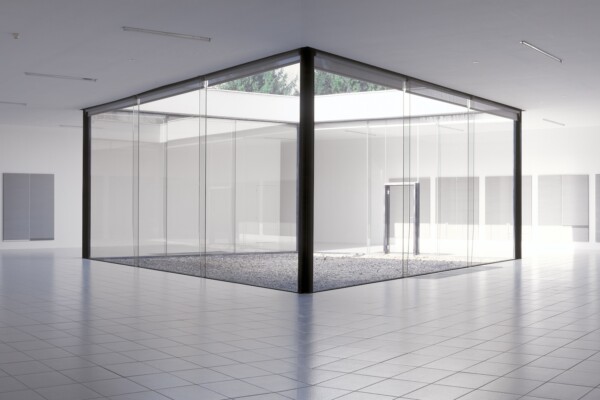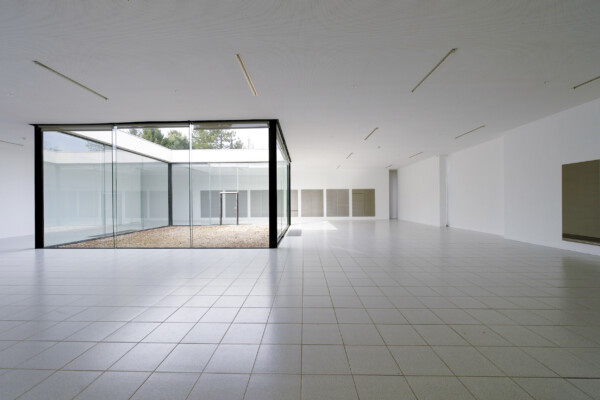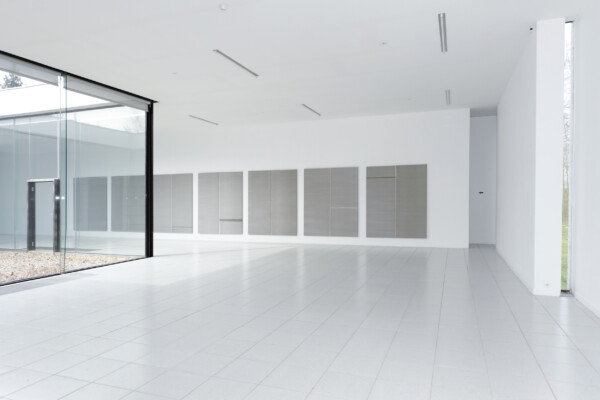Wade Guyton
Wade Guyton, like Kelley Walker, Seth Price, and Josh Smith, belongs to the new generation of American artists redefining the achievements of Abstract Modernism and Pop Art from the 1960s.
Guyton’s works result from printing on canvases using an Epson Inkjet Printer controlled by about a hundred individual ink heads. Passing linen canvases through a printer introduces errors that lead to distinctive formal effects. Serendipity is a determining factor in the development process of his Print Paintings. As only a limited surface can be processed by the printer, he folds his canvases in half to alternately print each side. Consequently, a fine vertical stripe remains white in the middle. Wrinkles, scratches, and multiple layers of printing enrich the black surface. These imperfections arise because the linen moves during the printing process and because the same canvas is sometimes passed through the machine multiple times. This results in shifting color tones in the black monochrome. By defining his works as ‘Paintings,’ replacing paint with ink, and the paintbrush with the printer, Guyton raises new fundamental questions about the meaning of painting.
Wade Guyton’s work is unmistakably inspired by the black paintings that Ad Reinhardt created towards the end of his life. This abstract modernist elevates his art to the level of the sublime and the timeless. The serial works of Wade Guyton also imbue the space with a cerebral atmosphere. Simultaneously, the detached working process closely aligns with that of Pop Art artist Andy Warhol. Warhol consistently questioned the physical involvement of the artist and the uniqueness of an artwork through the use of reproduction techniques.
The series Untitled by Wade Guyton exhibited at MDD further explores this issue. They appear to be identical gray monochromes, but due to errors in the printing process, each canvas is unique. The use of a printer becomes a symbolic act, referencing the ever-increasing shift from manual labor to machine labor in the production process. Technology, art, and economy are thus interwoven in his works.







